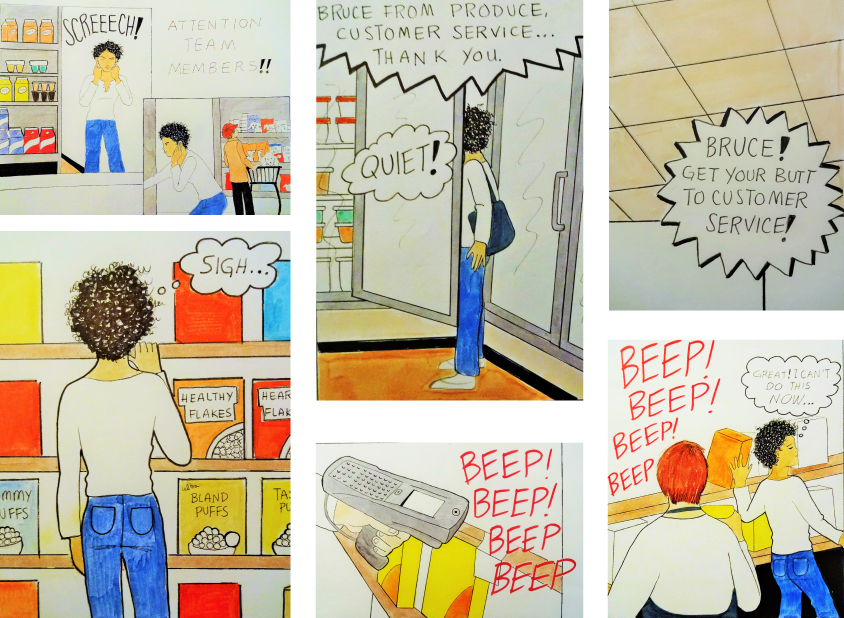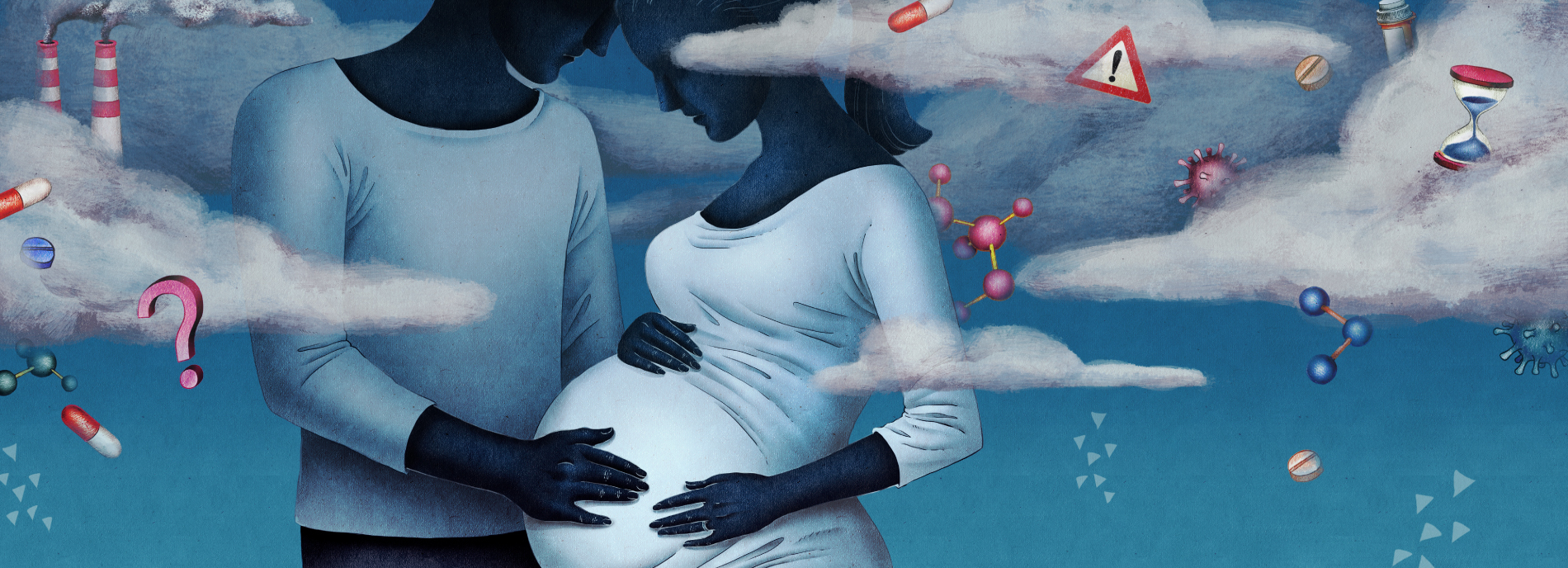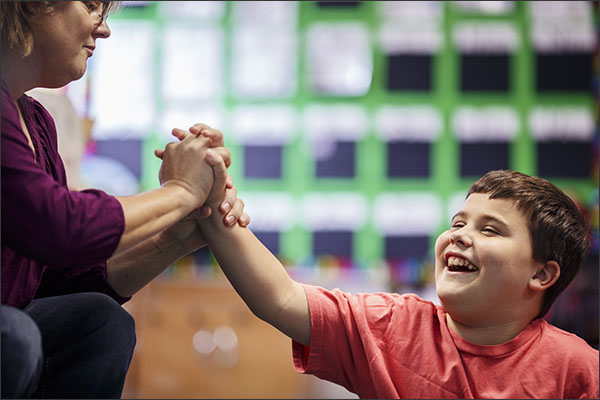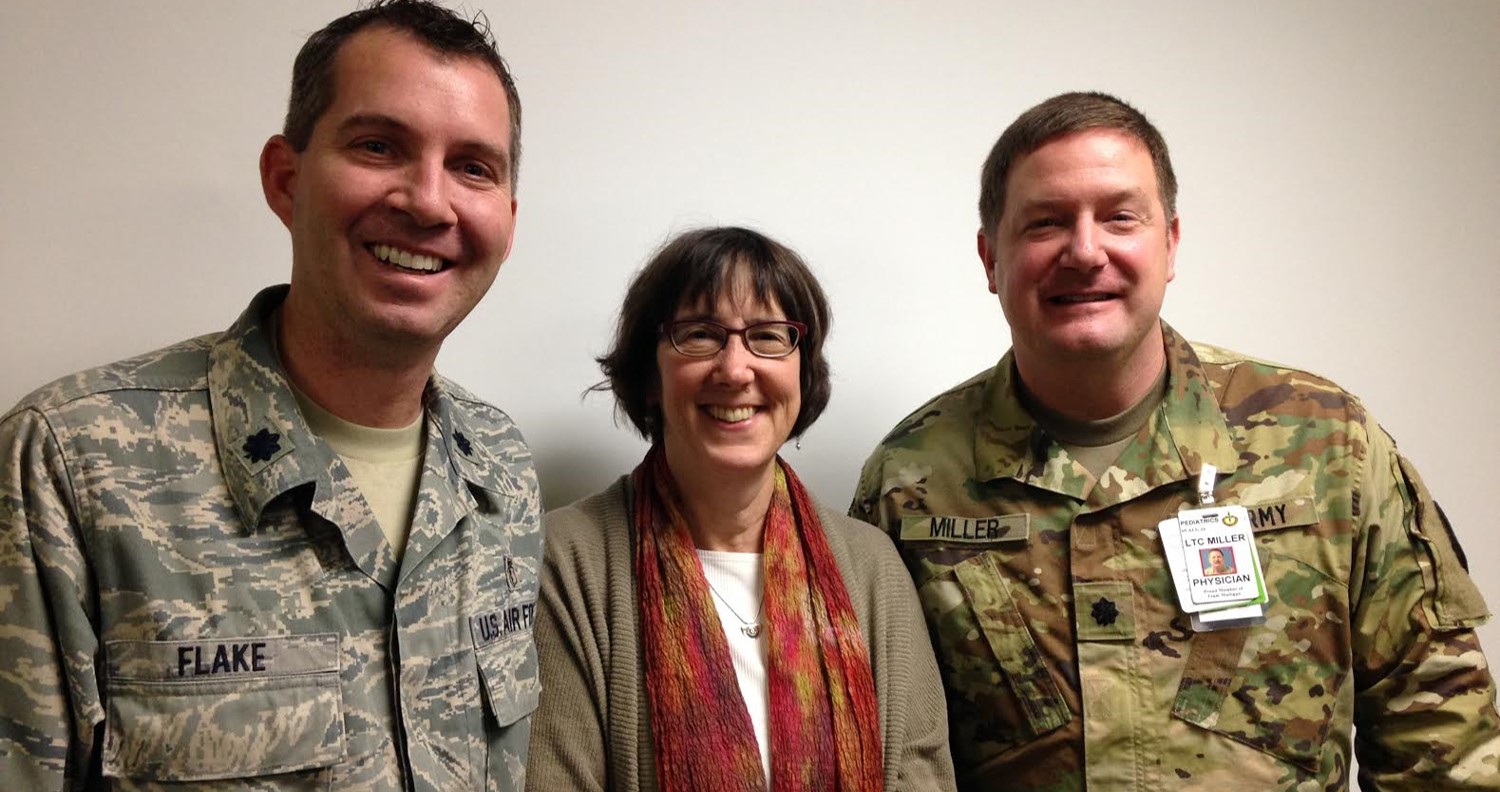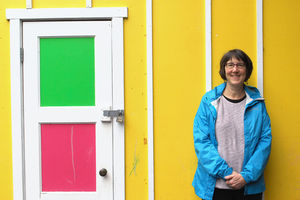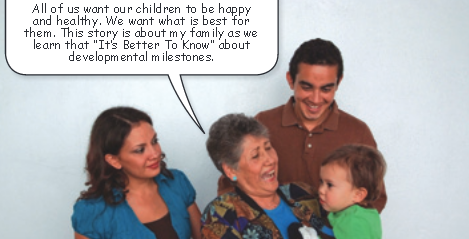The Ohio Center for Autism and Low Incidence (OCALI) offers free, online resources to enhance the understanding and treatment of individuals with ASD. Among their resources offered are video series on challenging behaviors and anti-bullying strategies, a resource gallery that includes templates for social narratives and First-Then boards, and monthly tips to support individuals on the autism spectrum. This month’s tip is on recognizing and supporting the sensory needs of individuals with ASD. To find other similar websites, visit our Autism Resources tab.
Peer mentoring available for UW students with ASD
The UW Speech and Hearing Sciences Department is offering a peer mentoring program for UW students with ASD and/or social communication challenges. The aim of this program is to help students navigate the complexities of college life. If you are a UW student interested in receiving this support, email Lauren Nehilla at nehill@uw.edu to learn more or enroll. Click here to see the program flyer.
Grants Available for Families of Children with ASD
The costs of services and equipment for children with ASD can place a strain on any family’s pocketbook. Ben’s Fund provides grants of up to $1,000 to families in our state who have a child with ASD. The fund was created by Jon and Traci Schneider (yes, the same Jon Schneider who’s the GM for the Seahawks), in partnership with FEAT of Washington. Funds can be used to help pay for assessments, therapies, GPS personal trackers, service dogs, computer tablets or apps, and many other types of ASD-related expenses. Additional information, including application materials, can be obtained here. Go Hawks!
Preventing Wandering
Wandering (also known as “elopement”) is a common source of concern and stress for parents of children with ASD. Just over the holidays, wandering ended in tragedy for the family of a five year old boy with ASD in Pennsylvania. Because wandering can occur in the blink of an eye, and simple vigilance is not enough, it is important that families develop a multi-faceted strategy for preventing wandering and taking quick and effective action if it does occur. To this end, Autism Speaks has compiled numerous resources, including the Big Red Safety Tool Kit, scripted stories, and other tips/strategies, to help families develop a plan for their child’s safety. Click here to review and download the resources.

Illustrating ASD
Leironica Hawkins is a New York City resident, comics artist, and adult with ASD. She is the author of the graphic novel, Asperger’s Syndrome: An Invisible Disability. She uses comics to bring to life the colorful spectrum of her sensory and social experiences as an adult living with ASD. To see some of her artistic renditions, and read her blog, click here.
Top 10 Tool Kits of 2015
Autism Speaks announced its 10 most commonly downloaded tool kits of 2015. Toolkit topics range from providing information to help parents understand ABA to providing strategies for assessing the community living skills of adolescents and adults. Number 1 on the list – with over 14,000 downloads – is the 100 Day Kit for Newly Diagnosed Families of Young Children. For a full list of top toolkits, click here.
Thinking Differently About ASD
As you indulge in some much needed rest and relaxation this holiday break, pull up a seat and check out these two TED Talks that challenge the way we think about ASD.
In the first, Faith Jegede draws on her experiences growing up with two brothers who have ASD and the value of thinking beyond what is considered “normal”. In the second, Temple Grandin gives us a glimpse into how her mind works and the unique way that ASD benefited her – and in turn, how thinking differently could benefit the world.
Ten Easy Tips to Prepare for the Holidays
The holidays can be a stressful and sensory over-stimulating time for individuals with ASD. The TEACCH Autism Program at the UNC School of Medicine has prepared 10 tips to help families prepare for a successful holiday season.
The keys to success? They all start with a “W” – WHO, WHAT, WHERE and WHEN. Providing this information helps individuals with ASD prepare for the changes in daily activities that holidays often bring. The tips include activities such as creating a calendar, establishing a routine, having a supply bag, and using visual schedules. Click here to read more.
Why don’t we know more about the environmental causes of autism?
In a recent post by Spectrum, Sarah DeWeerdt examines the reasons why we have not yet been able to pinpoint the specific environmental factors that play a role in causing autism. Environmental factors can range from anti-depressant medication taken during pregnancy to exposure to air pollution. DeWeerdt explains that finding direct “causes” for autism (and other disorders) is actually much harder than one might expect. Epidemiological studies are pretty good at finding associations between autism and something in the environment, but that doesn’t mean that one thing causes the other. Also, the environment is extremely challenging to control and measure accurately. It is very difficult to tease out one environmental event from others that are present at the same time. In addition, it can be difficult to measure exposures that a parent may be unaware of, or that may have occurred even before the child was born. DeWeerdt also points out that genetic links to autism have been studied for longer, and are, in some ways, far easier to measure than environmental factors. Better understanding the causes of autism will involve examining both environmental and genetic contributions and the intricate ways in which the two interact in large scale and longitudinal studies. Click here to read more about the challenges of examining environmental causes of autism.
Sun, Sand, and Screen-Refer-Treat at Florida International University
Last week, READi Lab Director Wendy Stone spent time in sunny Miami and made an important stop at Florida International University. She was invited as a guest lecturer for FIU’s Center for Children and Families Speaker Series as part of a continuing education credit program. Her presentation was titled: Early Detection and Intervention for ASD: Are We Ready for a Preventative Intervention Model? and described the early behavioral features of autism, limitations of our current service delivery model, and presented an alternative delivery model—the Screen-Refer-Treat model, now being evaluated in the READi Lab—which could expedite access to early and specialized services for toddlers with autism. Besides presenting, Wendy’s time in Miami also included taking in some of the artsy scenes around the South Beach and Wynwood areas!
Free Online Course for Early Care and Education Providers
Early care and education providers are well positioned to play a unique role in the developmental monitoring of the children and families they work with. The Centers for Disease Control and Prevention and its partners recognize this, and are dedicated to help early care providers and educators fulfill this role by offering a FREE online training course, Watch Me! Celebrating Milestones and Sharing Concerns.
This course offers tools for monitoring children’s development, best practices, and strategies for discussing developmental concerns with parents. It is offered as a 1-hour, 4-module online course with the option to receive continuing education credit after completion of all modules, quizzes, and a final evaluation of the course. Get started today!
Screen-Refer-Treat Study Presented at Early Development Conference
On Friday, READi Lab Assistant Director Lisa Ibañez presented a poster about our Screen-Refer-Treat study at the Zero To Three National Training Institute (NTI), which was held in Seattle this year. Zero To Three is a non-profit organization that focuses on supporting the health and development of infants, toddlers and their families. The NTI, which is Zero To Three’s comprehensive and multidisciplinary annual conference, covers research, best practices, and policy issues for early development with early educators, service providers, and researchers from around the country. Click here to see the poster for yourself!
Why do some children lose their ASD diagnosis?
Most of our knowledge about the prevalence of ASD in the U.S. comes from studies that are published by the Centers for Disease Control (CDC) every 4 years. These studies examine the rate of ASD diagnoses in a specific “slice” of the population: 8-year-olds living in 11 communities across the U.S. A new study, based on data collected by the CDC, provides information about how ASD diagnoses may change over time.
This study surveyed parents of 6- to 17-year-olds who reported in 2009-2010 that their child had “ever been diagnosed with” an ASD. The authors found that approximately 13% of children who had been diagnosed previously with ASD had “lost” their diagnosis by the time of the present study. The children who no longer had an ASD diagnosis had higher current levels of adaptive functioning and lower levels of ASD symptoms compared to those who retained the diagnosis. However, there were no early differences between the groups in the age of first concerns (about 2 ½ years), age of first service (about 4 ½ years), or age of initial diagnosis (about 5 ½ years). Parents reported several reasons for the changes in diagnosis: because “new information” became available (73.5%), because the initial diagnosis was made to help the child obtain services (24.2%), due to treatment or maturation (21%), or due to an initial misdiagnosis (15.5%). The vast majority of the children whose ASD diagnosis was removed (96%) had received a “replacement” diagnosis, the most common being ADHD.
The authors conclude that these changes in ASD diagnoses over time have implications for the current methods used to assess the prevalence of ASD, the characteristics of ASD, and the adequacy of services.
Click here to read Spectrum News’ interview with the study’s lead author, Stephen Blumberg. Click here to read the abstract of the study itself.
Autism-Friendly Santas are Back!
This Sunday, December 6th, four shopping malls across WA State will host sensory-friendly Santas for children with ASD and other special needs. The events are free, but reservations are required — so save your spot now for a photo op with Santa!
Locations in WA are: Northgate Mall (Seattle), Columbia Center Mall (Kennewick), Tacoma Mall, and Wenatchee Valley Mall. Click HERE to register for Santa visits at Northgate, Columbia Center, or Tacoma Malls, or HERE to register for Wenatchee Valley Mall.
Guess which lab member is in the photo below?
Happy 40th Birthday to the IDEA Act!
On November 29, 1975, the Education for All Handicapped Children Act, now known as the Individuals with Disabilities Education Act (IDEA), was signed into Public Law. Forty years later, the U.S. Department of Education celebrates the progress this landmark civil rights measure has made for ensuring that all children with disabilities have equal opportunities.
In adopting this measure, Congress opened public school doors to millions of children with disabilities, providing special education to 6.9 million students and early intervention services to over 340,000 infants and toddlers with disabilities and their families. This Act guarantees access to a free, appropriate, public education (FAPE) for every child with a disability, with later amendments leading to increased emphasis on access to the general education curriculum and provision of services for young children from birth to five.
As part of the celebration, the U.S. Department of Education asked to hear stories from children and youth with disabilities, which they have curated into a power point collection available for viewing and download on the IDEA 40 website.
What’s in a name? Why refer to autism as a “spectrum?”
In a recent article published in The Atlantic, Rose Eveleth raises important questions about the utility of referring to autism as a “spectrum.” She details the questions that many relatives of individuals with autism are often asked: “Is she high functioning?”, “Where on the spectrum is he?” Eveleth considers the fact that currently, there are no scientifically based “markers” along the spectrum that can be useful in this discussion, and referring to “functioning level” can provide further challenges. The diagnosis of autism has evolved a great deal over time, and continues to do so as genetic, behavioral, and neurological research progresses. Eveleth suggests that, as research evolves, we may have more meaningful markers of what autism looks like in different people, across the lifespan. This article raises significant questions about the ways in which autism is currently defined and the need for further specificity. Click here to read the article in its entirety.
Anti-Bullying Awareness & Prevention Workshop
Open Doors for Multicultural Families is offering another free parent workshop on “Anti-Bullying Awareness & Prevention for Students with Disabilities”, Wednesday, December 9th from 6-8 PM at the Federal Way School District’s Norman Center. Guest Speaker Danielle Eidenberg-Noppe, an Education Ombudsmen with the Office of Education will provide information about what you should do if you find out your child has been the target of bullying, how to talk about bullying with your child, and what you can do to make sure your child is safe from bullying. Click here for more information or to register.
STAT-MD Training at Madigan Army Medical Center
Last week Wendy spent 2 days at MAMC conducting a training workshop with her Tennessee buddies from Vanderbilt University and Blanchfield Army Community Hospital. The STAT-MD model was conceptualized by Dr. Quentin Humberd, a developmental behavioral pediatrician (DBP), at Fort Campbell, and was developed in collaboration with Wendy and her colleague Dr. Zachary Warren at Vanderbilt. The STAT-MD model was developed with the goal of facilitating specialized services for young children suspected of having ASD, and incorporates training on the STAT along with information about best practices and diagnostic coding for DBPs. Pictured below, alongside of Wendy, are Drs. Flake and Miller, who are DBPs who attended the training.
READi Lab in the News!
READi Lab director Wendy Stone was featured in a UW Daily article about Sesame Street’s newest character, Julia. As you probably know, Julia is Sesame Street’s first character with autism, and part of a larger initiative designed to promote awareness, understanding, and acceptance. Dr. Stone has been serving as an advisor to Sesame Street during the conceptualization and implementation of this initiative. Read The Daily article here!
It’s better to know!/¡Es mejor saber!
The CDC’s “Learn the Signs. Act Early.” campaign has created an excellent resource for families who may have concerns about their child’s development. “It’s better to know” is in the format of a graphic novel, and describes Carlos and Consuelo’s journey as they begin to have concerns about their son’s development. Ultimately, they decide to talk with their doctor about Carlitos, who was then able to talk to them about developmental milestones expected for a child of his age. This resource is not only engaging, but also provides important information about developmental milestones for families. This pamphlet is available in English y en Español!
- « Previous Page
- 1
- 2
- 3
- 4
- 5
- …
- 7
- Next Page »



